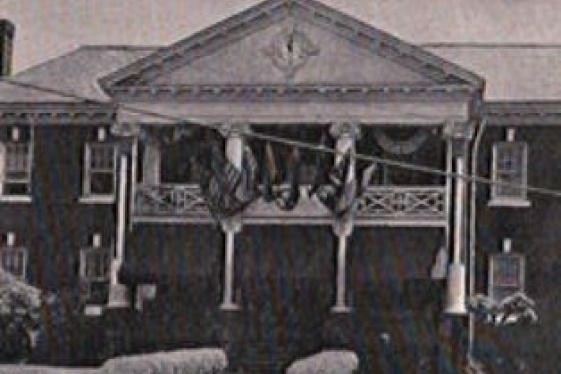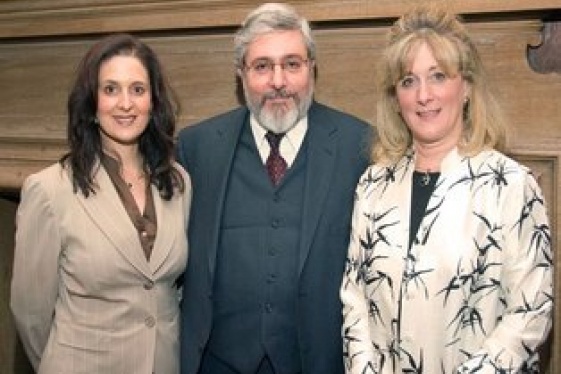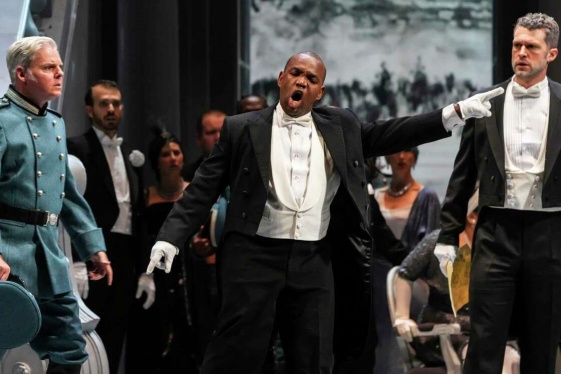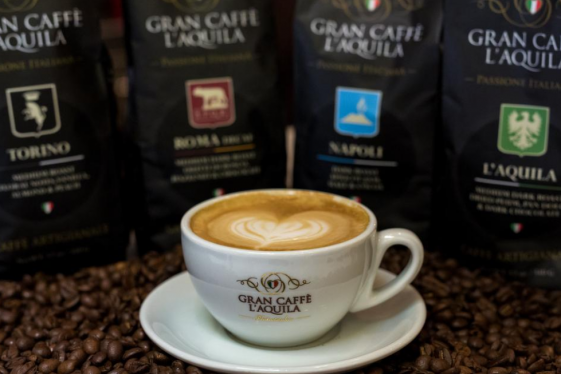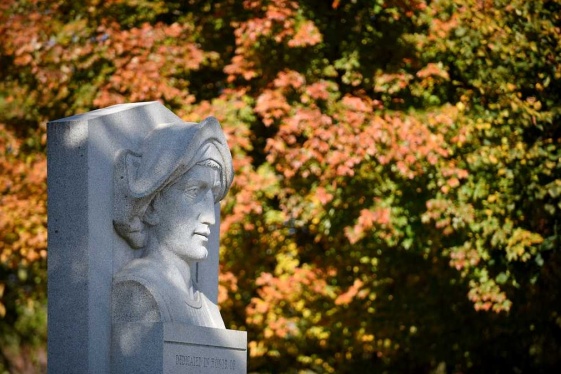
I hope and trust that this monument will be the means to bring in touch the people of Italy and that of America

BY: Stephanie Longo
“I hope and trust that this monument will be the means to bring in touch the people of Italy and that of America.”
It was with these words that Frank Carlucci, master sculptor and president of the Christopher Columbus Monument Association, presented the Columbus monument that stands on Scranton’s Courthouse Square to the city on October 21, 1892 during an event that the Scranton Republican newspaper described as the “greatest holiday observance the city ever saw.” Carlucci’s masterpiece is the grand staircase at Ellis Island. Both the Columbus monument and the grand staircase were created with stone from Carlucci’s quarry just outside of Forest City.
The unveiling of the statue welcomed more than 14,000 people, 8,000 of whom were school children. In fact, then-mayor John H. Fellows even considered having the Scranton Fire Department open its hose on the “surging mass of people” that had overtaken the city during the celebration. Representatives of all recently-arrived ethnicities—Irish, Polish, German, and French, to name a few—were present to celebrate the city’s Italian citizens and watch as the statue, which was sculpted in Carlucci’s front yard, was unveiled for all to see. It was, to many, one of the highest points in the city’s history.
The previous year, 11 Italian Americans in New Orleans were falsely accused of the murder of city police chief David Hennessy. When the Italians were later acquitted, established New Orleanians took “justice” into their own hands. It was the largest mass lynching in Italian American history, illustrated in the book “Vendetta” by Richard Gambino. This act of mob violence had surprising support: Future president Theodore Roosevelt wrote a letter to his sister referring to the Italians as "dagos" and called the lynchings "rather a good thing."
In response to the lynchings, Columbus statues began to appear across the nation. Many Italians living in the United States were scared and wanted to find a way to be accepted in their new country. For many, the idea of placing a statue of Christopher Columbus in their adopted hometowns was the best response to what had happened and a constructive way to celebrate Italian pride in light of the 400th anniversary of the explorer’s fateful discovery of the New World.
In Nicolas Comforti’s remarks as he formally deeded the statue to the city and county, he stated that “Often the Italian element has been looked upon as unpatriotic and indifferent to the welfare of their adopted country.” He added that, “This monument may be a link in the chain that binds the two nations, Italy and America, in the sacred tie of friendship, a symbol of love between the Italians and Americans. I assure you; the children of great Rome are law-abiding citizens.”
In recent years, Christopher Columbus’s legacy has been the source of controversy both within and outside of the Italian American community. Columbus statues across the United States are being torn down. In light of the recent tragic and horrifying events in Minneapolis, there are renewed calls for these monuments to be removed. There are Italian Americans who strongly believe that we as an ethnicity need another hero to represent us and yet there are others who deem the vandalism, destruction or removal of these monuments as a hate crime geared toward Italian Americans.
In their book, “La Storia: Five Centuries of the Italian American Experience,” by Jerre Mangione and Ben Morreale, considered by many to be the quintessential work of Italian American history, Columbus is described as a “religious man who defended the native population whenever he could against the cruelties of the times,” yet on another page, Columbus is described as having brought back hundreds of enslaved Native Americans who were offered for sale, “thereby setting in motion the corrupt process of slavery.” Clearly, the Columbus the man is as complicated as the myths that surround him.
Columbus Day as a holiday also has national ties as it was the late Neil Trama of West Scranton who, in the 1960s, began an effort to unite the nation around Columbus’s legacy and the American spirit of hope and discovery. Trama, backed by the Scranton Chapter of UNICO National and Congressman Peter W. Rodino, successfully lobbied Congress to declare October 12 as a legal holiday to celebrate the birth of the “New World.” Until this point, the day was seen as only a day for Italian Americans to celebrate. Thus, the Columbus monument is significant for both its original 1892 history and its indirect ties to Trama’s efforts.
Upon accepting the monument from Carlucci and Comforti, Mayor Fellows said to the Italian community, “On behalf of the people of the City of Scranton and of the County of Lackawanna, I accept this statue, this beautiful and appropriate gift, in the same spirit with which you have given it. It has been freely given and, I assure you, it is gratefully received. It will be forever treasured by the people of this city and this county and the more so because you people who have conveyed the gift have paid for it from the proceeds of your honest toil. In presenting this gift, you have honored the city and county, and so, accordingly, it is an honor to yourselves.”
The Italian American community condemns what happened to George Floyd as it condemns all forms of racism because we, too, have been subject to ethnic prejudices as explained above. Our brothers and sisters in the African American community have greatly contributed to the fabric of this great nation and deserve respect and admiration for all they have done to make our nation what it is today.
In the words of Dr. Martin Luther King, Jr., “We all came in on different ships, but we’re all in the same boat now.”
You may be interested
-
A wreath for Columbus and three crowns for t...
The Columbus Day Committee of Atlantic City along with the Bonnie Blue Foundation annually...
-
Ethnic clubs are fading into Beaver County's...
By Tom Davidson When Dominic "Hawk" Santia was a boy, he'd tag along with his fat...
-
I Piccoli Cittadini: incontro di educazione...
Saturday, October 24, 10-12 AM in EDT, 1026 Public Ledger Building – 150 South Indepe...
-
Italian restaurant opens in Conewago Townshi...
by Melody Asper Hanover's newest restaurant may seem like an old friend to anyone...
-
President and CEO of Furia Rubel Elected Jus...
Furia Rubel Communications, Inc., an award-winning integrated and strategic marketing and...
-
`Otello,' Rossini's not Verdi's, staged in Ph...
Rossini’s “Otello” premiered in 1816, and the musical adaptation of Shakespeare's famous p...
-
'A silver lining': Gran Caffe L’Aquila finds...
Philadelphia’s Gran Caffe L’Aquila is no stranger to tragedy. In fact, the landmark Italia...
-
'Atmosphere of anger' in Glen Rock and beyond...
The debate over turning Columbus Day into Indigenous Peoples’ Day has people riled up on b...




